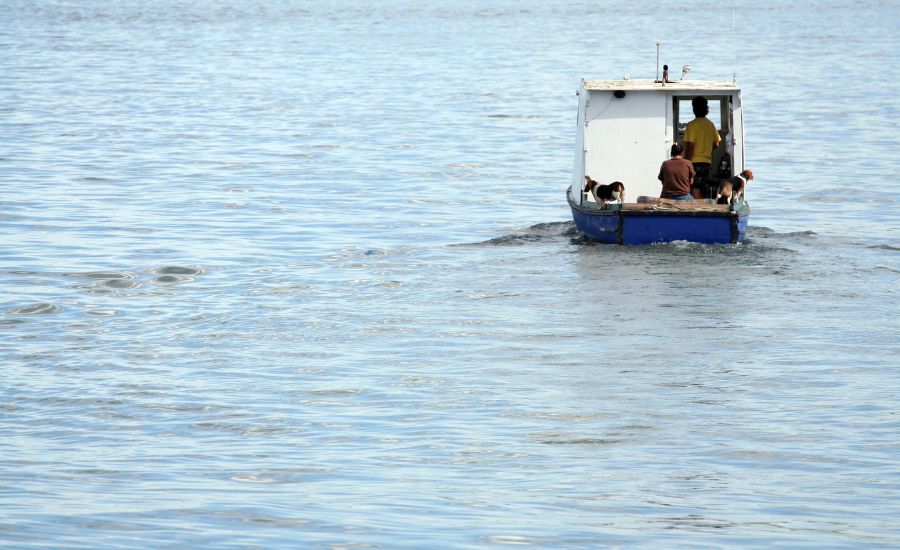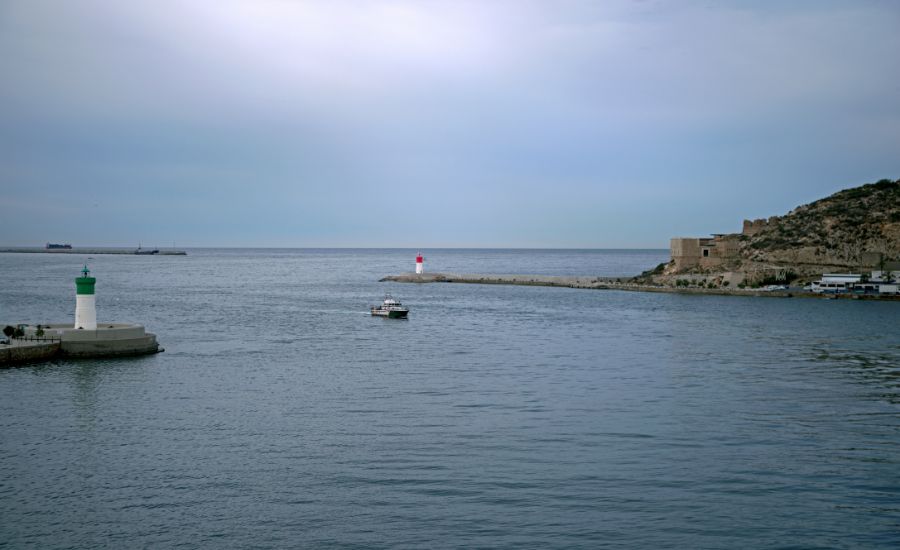
Port and Starboard in Navy
While “left” and “right” can confuse, “port” and “starboard” are unambiguous for sailors. At sea, emergencies can occur at any time, so it is vital that everything on board is clear and can be described quickly.
What is the origin of the nautical term “right”?
The boat evolved from a simple canoe. Since most people are right-handed, most paddler kayakers naturally steer from the right side of the boat (looking forward). As canoes developed into larger vessels, the steering oars became larger. They evolved into broad-bladed oars, fixed vertically in the water and permanently attached to the side of the boat by flexible moorings or built-in removable swivels.
All Nordic naval ships used a side-mounted rudder, which was always located on the right side. This rudder was called a “storyboard” in Anglo-Saxon and developed into the most common device installed at the stern during the Middle Ages. Over time, the word “storyboard” evolved into “starboard” and has remained in English to describe anything to the right of a ship’s centerline when viewed from the stern.
What is the origin of the nautical term “port”?
While “starboard” refers to the right side of a ship, the left side is now called “port” – although this was not always the case.
In Old English, the term was “bæcbord” (modern German backboard and French bâbord). This term did not appear until the Middle Ages and later English, when “larboard” was used—a term that may have been derived from “laddebord,” meaning “load side”; the side rudder on the starboard side (“storyboard”) was vulnerable to damage if it was alongside a dock, so early ships had their left rudder (“storyboard”) resting against the dock.
However, from early times, the Port was sometimes used instead of “larboard,” probably derived from the mounting Port. However, the term was formalized in the middle of the nineteenth century. According to Admiral Smith’s 1867 book Sailor’s Words, “By order of the Admiralty, the port side of a ship is called port, rather than left, because it is less mistaken in sound than right.”
What are the port and starboard control lines of a ship?
Since Elizabethan times, it has been customary to divide a ship’s company into left and right units, one of which is always on duty.
The watch line is a piece of material worn around the shoulder line of a sailor’s jacket to indicate which watch it belongs to. A ship’s starboard watch has a stripe on the right shoulder, while a ship’s port watch has a stripe on the left shoulder. The stripe on blue suits is red, and the stripe on white suits is blue. The lookout line was abandoned around 1895 but continued on boys’ training ships until 1907.
Also read: Grounding of World Diana By ATSB
Have you ever wondered where the terms port and starboard of a ship come from?
Port and starboard are different terms that refer to the two halves of a ship, with the Port being on the left and the starboard on the right when facing forward. Let’s explore the roots of these nautical terms.
In early sailing, the steering oar was used at the stern, mostly on the right side, to accommodate right-handed sailors. This position facilitated comfortable forward navigation. Starboard acquired the nickname “steer side,” which later evolved into “starboard” by combining the Old English words “steor” (to steer) and “bord” (side of the ship).
As ships grew, the steering oar and the side facing it to dock became known as the “port” or loading side.
Also Read: What is the Bridge of a Ship – Design and Layout?
Another theory links the term “right” to Viking ships, who steered on the starboard side with a “board with a star.” Meanwhile, naval vessels in Northern Europe had their rudders hung on the starboard side, known in Anglo-Saxon as “storyboard,” which evolved to “starboard.”
For smaller ships, loading cargo from the starboard side posed a challenge, leading to the need to dock on the left side. The term “port” was eventually replaced by “right” due to confusion with “right” during navigation.
These nautical terms became popular among English merchant ships that traveled across countries in the 16th and 17th centuries. During the colonial era, sailors around the world adopted the terminology. As regulators developed uniform maritime laws, they recognized the widespread use of “port” and “right” in different regions.
Navigation lights have their origins in the traditional lanterns used on ships. Red glass was readily available and commonly used in lanterns, becoming a practical choice for marking port entrances and boundaries.
The use of red markings, aided by red glass, helped ships identify the port side and navigate safely when approaching or leaving a port. This practice led to the tradition of using red lights exclusively on the port side.
Green was used to indicate starboard, with green being the opposite of red on the color wheel. This clear distinction made determining the ship’s course and heading easier.
Anyone who has been on a ship has undoubtedly heard the terms “port” and “starboard” used instead of “port” and “starboard.”
Port and starboard, in nautical terms, usually refer to the port and starboard sides of a ship when facing the bow of the ship. But why are Port and starboard used as nautical terms?
The words “port” and “starboard” come from the medieval LatiPortus “Portus,” meaning “port,” and the Old English word “storyboard,” meaning “the side opposite to the direction of motion of the ship.”
Port and Starboard Boats
Today’s topic is unraveling some of the mysteries behind traveling in the marine and coastal environment. The more tools people can access and use to help them understand that environment, the better. Its information is extremely useful in helping people on this journey.
Also Read: What Is ICCP In Ship, And How Does It Work?
How to Remember Port and Starboard
There are many ways to remember which side of a boat is Port and which is starboard.
Think about how the letters end in P.S.: P for Port on the left side and S for starboard on the right side.
Another way to remember is to think of “port” as meaning “left” since they are both four letters long and “right” as meaning “right.”
There is an old saying that is easy to remember: “A sailor named red is on the left side of port.”
For wine lovers, you might think of a good bottle of Port by remembering this saying: “There is a little red port left in the bottle.” The red Port is on the left.
How do you remember the colors of port and starboard lights?
When sailing at night, Port and starboard can be identified by a green or red light. That’s why it’s important to remember which is which. The easiest way to think of a port is to think of red as the same color as the Port, so the starboard should be green.
The Importance of Standard Conditions on Ships
Besides Port and starboard, many terms on ships have been standardized for several reasons, including terminology, navigation, steering, and safety, all to avoid confusion.
Using Port and Starboard instead of Port and Starboard means that no matter which direction you are on the boat, you must know which side of the boat is pointing and which heading the surrounding ships have.
For example, a ship with a starboard bow has the right of way to a ship with a port bow, and it must pass from one Port to another when other ships pass in front of it.
We hope this article has helped you better understand the origins of the port and starboard terms and why and how they are used!

Why do ships use “port” and “starboard” instead of “port” or “starboard”?
Port and starboard never change because they are clear references independent of the sailor’s orientation. This allows him to use these nautical terms instead of left or right, thus avoiding confusion and increasing safety on board.
So which side is it?
When looking towards the bow, the Port is on the left side of the boat, and when looking towards the bow, the starboard is on the right side of the boat.
Which side of the boat is right?
The starboard is on the right side of the boat when looking forward.
Also read: How Do You Understand Port and Starboard?
What is the bow of a ship?
The bow is the part of a ship that is usually forward when it is moving – the front end.
What is the stern?
The stern is the back, or stern, of a ship.
Which side of a ship is ported?
The Port is the left side of a ship.

Final Verdict
Thus, knowledge of the terms “port” and “starboard” is crucial to anyone who has anything to do with boats or naval forces. But despite the banality of these words, each has a purpose when it comes to understanding, avoiding an accident, and working effectively. To this date, “port” and “starboard” cannot be dismissed from what traditionally considered essential necessities of successful naval affairs.
Therefore, regardless of whether you are an experienced sailor or a person with an interest in the world of water, I would like to challenge you to know these terms and value them whenever you encounter them. And, of course, let’s not forget the old but very important saying: “Port left, Starboard right.”









